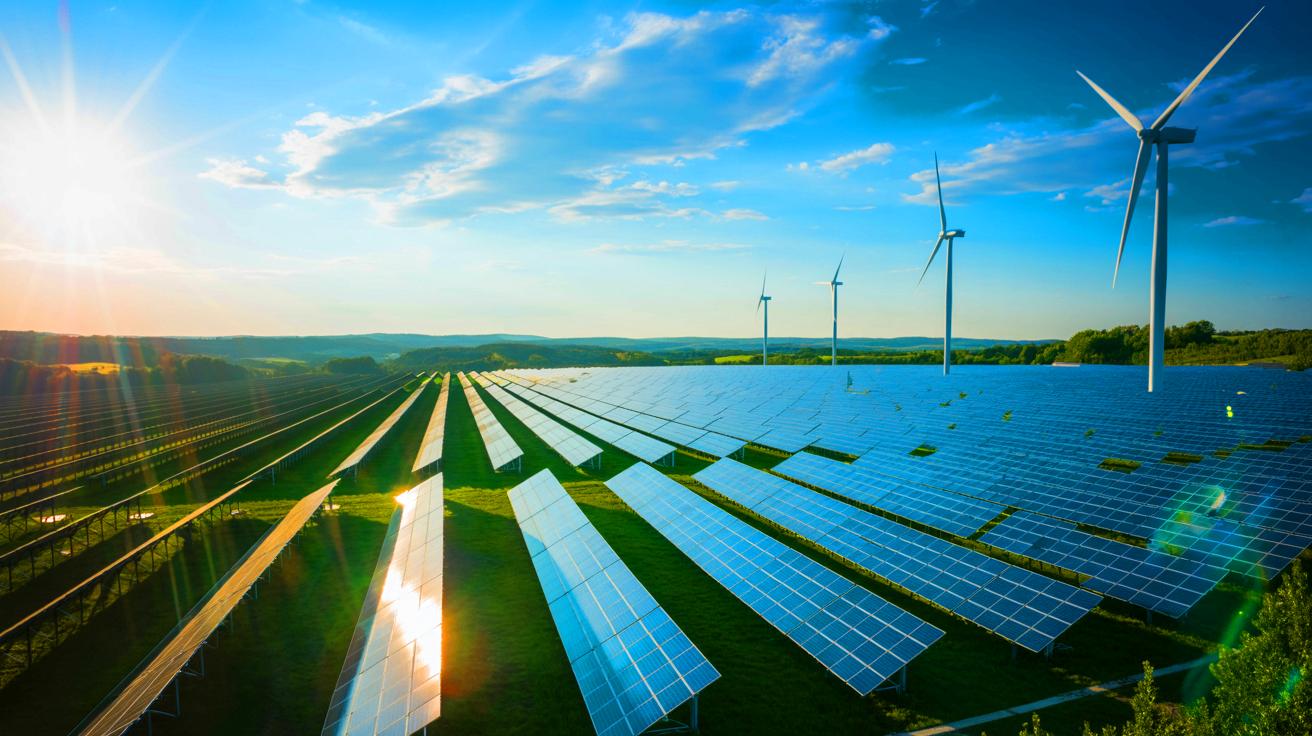- 🌞 China installed a record 93 GW of solar capacity in May, equating to nearly 100 solar panels every second, highlighting its rapid renewable energy growth.
- 🌬️ With 26 GW of wind power installations, equivalent to 5,300 turbines, China matches the electricity needs of entire nations like Poland and Sweden.
- 🌍 China’s installed solar photovoltaic capacity now surpasses 1,000 GW, making it a global leader in clean energy technology and climate change discussions.
- 💼 Despite these achievements, the Chinese renewable energy sector faces financial challenges, with major firms experiencing significant losses due to hyper-competitiveness.
In recent years, China has been making headlines due to its unprecedented advancements in renewable energy. With extraordinary figures that indicate significant growth in solar and wind power, China is firmly establishing itself as a leader in the clean energy sector. As the world’s second-largest economy, China’s commitment to renewable energy is not only reshaping its own landscape but also influencing global trends. The scale of installations in recent months is a testament to China’s aggressive pursuit of sustainability, a move that’s garnering global attention and sparking discussions on the future of energy.
China’s Record-Breaking Renewable Installations
China’s remarkable progress in the renewable energy sector is most evidently seen in its most recent figures. In May alone, China installed an astounding 93 gigawatts (GW) of solar capacity, equating to nearly 100 solar panels every second. Additionally, wind power installations reached 26 GW, translating to about 5,300 turbines. These numbers reveal a massive stride forward, underscoring China’s rapid infrastructural development in renewable energy. Remarkably, the electricity generated by these installations could power entire countries like Poland or Sweden. This surge is part of a broader trend, with China adding 198 GW of solar and 46 GW of wind power between January and May, enough to match the electricity needs of countries like Indonesia or Turkey.
The Global Impact of China’s Renewable Energy Surge
China’s advancements in renewable energy technology are not just a national achievement but a global phenomenon. The country now hosts over 1,000 GW of installed solar photovoltaic capacity, accounting for nearly half of the world’s total. This milestone marks China as both the world’s largest emitter of greenhouse gases and the top supplier of clean energy technology. The duality of this role places China at the forefront of global climate change discussions and highlights its potential to influence worldwide environmental policies. As climate talks continue to evolve, China’s initiatives could significantly shape the direction and success of international agreements.
Challenges Within China’s Renewable Energy Sector
Despite these achievements, the rapid expansion of China’s renewable energy sector is not without its challenges. The hyper-competitiveness of the Chinese economy exerts substantial pressure on clean energy firms, often leading to financial strains. The cost of production for solar panels is barely covered by their selling price, creating a precarious financial situation for manufacturers. In the first quarter of the year, China’s top five solar companies reported collective losses exceeding 8 billion yuan. Industry insiders like Yang Liyou have described the current state as a “death cycle,” highlighting the need for a sustainable economic model that supports ongoing innovation and growth.
Political Dynamics and Renewable Energy
China’s renewable energy expansion is intricately tied to its political landscape. The country’s leader, Xi Jinping, has linked China’s climate goals with the growth of the clean energy sector, viewing it as a critical component for revitalizing the nation’s economy. This strategic alignment is evident as researchers and former U.S. officials engage in unofficial climate discussions in Beijing. Historical tensions between China and the U.S. on environmental policies, particularly during the Trump administration, have underscored the complexity of international climate negotiations. However, the shared objective of global sustainability provides a potential pathway for collaboration, despite past challenges.
The scale and speed of China’s renewable energy development are undeniably impressive, setting a benchmark for other nations. However, these achievements raise questions about the sustainability of such rapid growth and the economic models underpinning the industry. As China continues to expand its clean energy infrastructure, how will it balance the economic pressures with its ambitious environmental goals? More importantly, what role will China play in shaping the future of global energy policies? The answers to these questions will likely define the next era of energy innovation and international cooperation.
Our author used artificial intelligence to enhance this article.
Did you like it? 4.5/5 (24)
